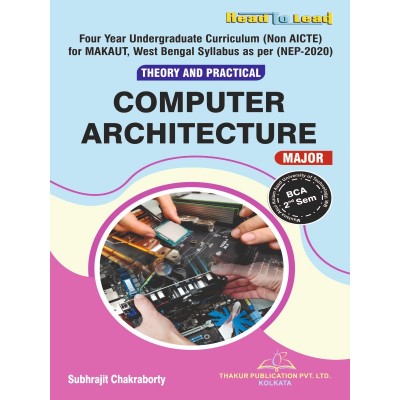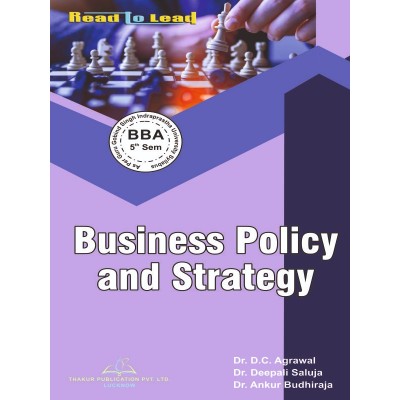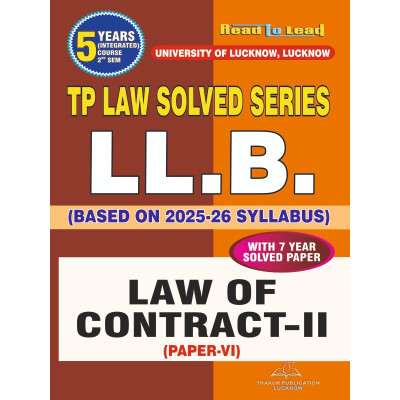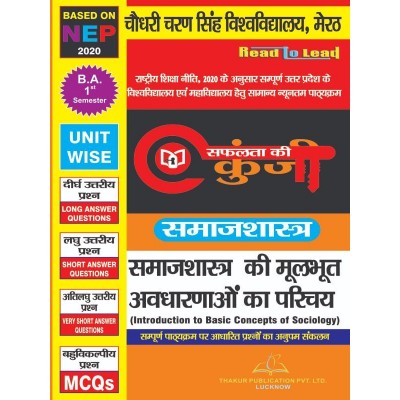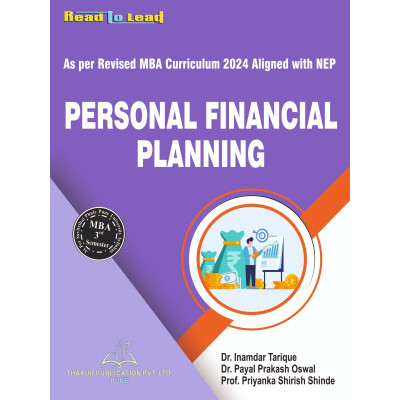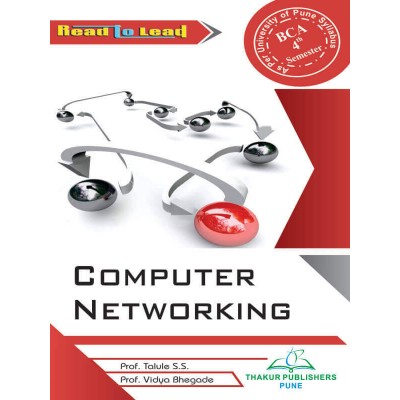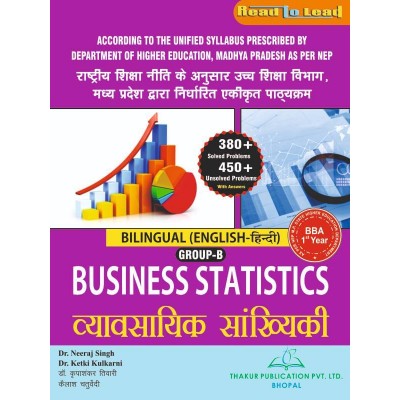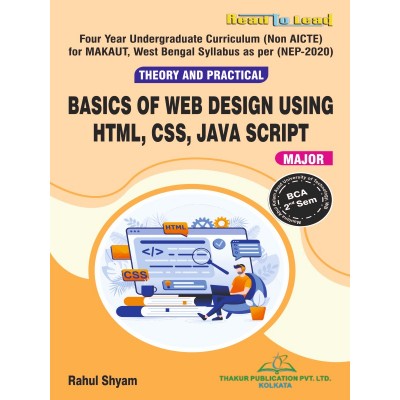Categories
- Pharmacy
-
Nursing
-
MBA
-
BBA
- U.P. State University
- Veer Bahadur Singh Purvanchal University, Jaunpur
- Chaudhary Charan Singh University, Meerut
- Dr. Bhimrao Ambedkar University, Agra
- Chhatrapati Shahu Ji Maharaj University, Kanpur
- Mahatma Jyotiba Phule Rohilkhand University, Bareilly
- Mahatma Gandhi Kashi Vidyapith, Varanasi
- Dr. Ram Manohar Lohia Avadh University, Ayodhya
- Deen Dayal Upadhyaya Gorakhpur University
- Prof. Rajendra Singh (Rajju Bhaiya) University, Prayagraj
-
BCA
- UP State Universities
- University of Pune
- I.K.Gujral Punjab Technical University (PTU)
- University of Rajasthan
- Rashtrasant Tukadoji Maharaj Nagpur University
- Uttar Pradesh NEP2020
- University of Rajasthan ,Jaipur (According to NEP-2020)
- BCCA (B. Com - Computer Science)
- Haryana
- West Bengal
- BBA (CA)
- PUNE BCA (Sci,Commerce)/B.Com (CA)
- Dr. A. P. J. Abdul Kalam Technical University, Lucknow ( AKTU )
- MCA
-
B Ed
- Lucknow University B.Ed Books
- Chaudhary Charan Singh University/Maa Shakambhari University, Saharanpur
- Dr Bhim Rao Ambedkar University, Agra
- Mahatma Gandhi Kashi Vidyapeeth, Varanasi
- Chhatrapati Shahu Ji Maharaj University
- Prof. Rajendra Singh (Rajju Bhaiya) University, Prayagraj (PRSU)
- Mahatma Jyotiba Phule Rohilkhand University(Mjpru), Bareilly
- Dr. Ram Manohar Lohia Avadh University, Ayodhya
- Bundelkhand University, Jhansi
- B.A,B.ed
- B.Sc, B.ed
- Deen Dayal Upadhyaya Gorakhpur University
- Veer Bahadur Purvanchal University (VBPU)
- Maharaja Suhel Dev State University ,Azamgarh (MSDSU)
- Raja Mahendra Pratap Singh State University, Aligarh (RMPSSU)
- Barkatullah Vishwavidyalaya (Bhopal)
- Jiwaji University (Gwalior)
- Vikram University (Ujjain)
- Dr. Harisingh Gour University (Sagar)
- Devi Ahilya Vishwavidyalaya (Indore)
- Rani Durgavati Vishwavidyalaya (Jabalpur)
- Awadhesh Pratap Singh University (Rewa)
- Maharaja Chhatrasal Bundelkhand University (Chhatarpur)
- D. EL. ED
- TET
-
B Com
-
B Sc
- B.Sc. U.P. State Universities Common Syllabus NEP
- Veer Bahadur Singh Purvanchal University, Jaunpur
- University of Lucknow
- Chaudhary Charan Singh University, Meerut
- Madhya Pradesh
- Chhatrapati Shahu Ji Maharaj University, Kanpur
- Dr. Bhimrao Ambedkar University, Agra
- Mahatma Gandhi Kashi Vidyapith, Varanasi
- DEEN DAYAL UPADHYAYA GORAKHPUR UNIVERSITY
- Prof. Rajendra Singh (Rajju Bhaiya) University, Prayagraj
- Dr. Ram Manohar Lohia Avadh University, Ayodhya
- Mahatma Jyotiba Phule Rohilkhand University, Bareilly
- Uttarakhand State Universities
- B.Sc. Bihar Universities Common Syllabus NEP
- University of Rajasthan (Jaipur)
- Haryana
-
Bachelor of Arts [B.A.]
- B.A. Of U.P. State Universities Common Syllabus NEP
- Veer Bahadur Singh Purvanchal University, Jaunpur
- University of Lucknow
- Chaudhary Charan Singh University, Meerut
- Chhatrapati Shahu Ji Maharaj University, Kanpur
- Dr. Bhimrao Ambedkar University, Agra
- Mahatma Gandhi Kashi Vidyapith, Varanasi
- Deen Dayal Upadhyaya Gorakhpur University
- Prof. Rajendra Singh (Rajju Bhaiya) University, Prayagraj
- Dr. Ram Manohar Lohia Avadh University, Ayodhya
- Mahatma Jyotiba Phule Rohilkhand University, Bareilly
- Madhya Pradesh
- Uttarakhand
- Bihar
- University of Rajasthan (Jaipur Syllabus as Per NEP2020)
- Haryana NEP-2020
- B Tech
- LLB
- SWA Education
COMPUTER ARCHITECTURE (Major) MAKAUT BCA SECOND SEM

AUTHORS: Subhrajit Chakraborty
ISBN : 978-93-5755-497-8
Tax excluded
Contents
|
Module 1: Data Representation |
||
|
1.1. |
Data Representation |
13 |
|
1.2. |
Number Systems |
14 |
|
1.2.1. |
Introduction |
14 |
|
1.2.2. |
Types of Number Systems |
15 |
|
1.2.2.1. |
Binary Number System |
15 |
|
1.2.2.2. |
Decimal Number System |
16 |
|
1.2.2.3. |
Octal Number System |
16 |
|
1.2.2.4. |
Hexadecimal Number System |
16 |
|
1.2.2.5. |
Relationship between Binary, Octal and Hexadecimal Number Systems |
17 |
|
1.3. |
Alphanumerical Representation |
17 |
|
1.3.1. |
EBCDIC |
18 |
|
1.3.2. |
ASCII Code |
19 |
|
1.3.3. |
Unicode |
20 |
|
1.4. |
Complements |
21 |
|
1.4.1. |
1’s Complement |
21 |
|
1.4.2. |
2’s Complement |
22 |
|
1.4.3. |
9’s Complement |
24 |
|
1.4.4. |
10’s Complement |
25 |
|
1.4.5. |
(r - 1)’s Complement |
26 |
|
1.4.6. |
r’s Complement |
28 |
|
1.5. |
Fixed Point Representation |
28 |
|
1.5.1. |
Integer Representation |
29 |
|
1.5.2. |
Arithmetic Addition and Subtraction |
30 |
|
1.5.3. |
Overflow |
31 |
|
1.5.4. |
Decimal Fixed Point Representation |
33 |
|
1.6. |
Floating Point Representation |
33 |
|
1.7. |
IEEE 754 Floating Point Representation |
35 |
|
1.8. |
Exercise |
37 |
|
|
|
|
|
Module 2: Computer Arithmetic |
||
|
2.1. |
Computer Arithmetic |
37 |
|
2.1.1. |
Introduction |
37 |
|
2.1.2. |
Addition and Subtraction Algorithm |
37 |
|
2.1.2.1. |
Addition and Subtraction of Signed-Magnitude Data |
38 |
|
2.1.2.2. |
Addition and Subtraction Using Signed 2’s Complement Data |
39 |
|
2.1.3. |
Multiplication Algorithm |
45 |
|
2.1.3.1. |
Booth’s Algorithm |
45 |
|
2.1.3.2. |
Steps of Booth Algorithm: Multiplication of Two 4-Bit Binary Numbers |
45 |
|
2.1.4. |
Division Algorithm |
48 |
|
2.1.4.1. |
Restoring Division |
49 |
|
2.1.4.2. |
Non-Restoring Division |
51 |
|
2.2. |
Exercise |
53 |
|
|
|
|
|
Module 3: Register Transfer and Micro-Operations |
||
|
3.1. |
Register Transfer Language (RTL) |
54 |
|
3.1.1. |
Introduction |
54 |
|
3.1.2. |
Register Transfer |
55 |
|
3.1.2.1. |
Bus Transfer/Bus System for Registers |
55 |
|
3.1.2.2. |
Memory Transfers-Memory Read, Memory Write |
56 |
|
3.1.3. |
Micro-Operations |
56 |
|
3.1.3.1. |
Arithmetic Micro-Operations |
57 |
|
3.1.3.2. |
Logic Micro-Operation |
59 |
|
3.1.3.3. |
Shift Micro-Operations |
61 |
|
3.1.4. |
Binary Adder |
63 |
|
3.1.5. |
Binary Adder-Subtractor |
64 |
|
3.1.6. |
Binary Incrementer |
64 |
|
3.1.7. |
Arithmetic Circuit for Arithmetic Micro Operations |
65 |
|
3.1.8. |
One State Logic Circuit |
67 |
|
3.1.8.1. |
Selective Set Operation |
68 |
|
3.1.8.2. |
Selective Complement Operation |
68 |
|
3.1.8.3. |
Selective Clear Operation |
68 |
|
3.1.8.4. |
Mask Operation |
68 |
|
3.1.8.5. |
Insert Operation |
69 |
|
3.1.8.6. |
Clear Operation |
69 |
|
3.2. |
Exercise |
70 |
|
|
|
|
|
Module 4: Basic Computer Organization and Design |
||
|
4.1. |
Basic Computer Organisation and Design |
71 |
|
4.1.1. |
Introduction |
71 |
|
4.1.2. |
Basic Components of Computer Organisation |
71 |
|
4.1.3. |
Common Bus System |
73 |
|
4.1.4. |
Timing and Control |
74 |
|
4.2. |
Register |
75 |
|
4.2.1. |
Introduction |
75 |
|
4.2.2. |
List of Basic Computer Registers |
75 |
|
4.3. |
Instructions Codes |
77 |
|
4.3.1. |
Introduction |
77 |
|
4.3.2. |
Stored Program Organization |
77 |
|
4.3.3. |
Addressing Modes |
78 |
|
4.3.3.1. |
Immediate Addressing |
79 |
|
4.3.3.2. |
Direct (or Absolute) Address |
79 |
|
4.3.3.3. |
Indirect Address |
80 |
|
4.3.3.4. |
Displacement Addressing/Effective Address |
80 |
|
4.4. |
Computer Instructions |
82 |
|
4.4.1. |
Memory Reference Instructions |
82 |
|
4.4.2. |
Register-Reference Instructions |
84 |
|
4.4.3. |
Input-Output Instructions |
85 |
|
4.5. |
Instruction Cycle |
85 |
|
4.6. |
Control Unit |
88 |
|
4.6.1. |
Introduction |
88 |
|
4.6.2. |
Functions of Control Unit |
88 |
|
4.6.3. |
Block Diagram of Control Unit |
88 |
|
4.6.4. |
Control Design Techniques |
89 |
|
4.7. |
Exercise |
91 |
|
|
|
|
|
Module 5: Microprogrammed Control |
||
|
5.1. |
Micro-Programmed Control |
92 |
|
5.1.1. |
Introduction |
92 |
|
5.1.2. |
Microinstruction |
92 |
|
5.1.3.
Your review appreciation cannot be sent
Report comment
Report sent
Your report cannot be sent
Write your review
Review sent
Your review cannot be sent
| ||







